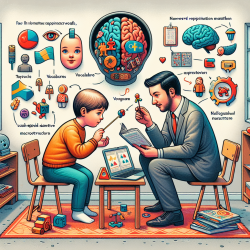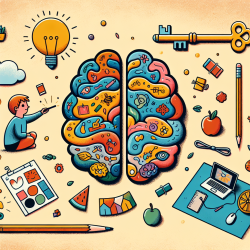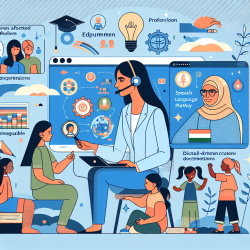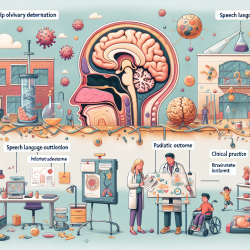As practitioners in the field of speech-language pathology, it is essential to base our decisions on robust data and evidence. The recent study titled Beyond Language Scores: How Language Exposure Informs Assessment of Nonword Repetition, Vocabulary and Narrative Macrostructure in Bilingual Turkish/Swedish Children with and without Developmental Language Disorder provides invaluable insights that can help refine our assessment strategies for bilingual children.
Understanding the Study
This research focuses on bilingual Turkish/Swedish children, examining how language exposure impacts their performance on various language tasks. The study involved 108 typically developing (TD) children and six children with developmental language disorder (DLD), assessing them on nonword repetition (NWR), vocabulary, and narrative macrostructure in both Turkish and Swedish.
Key Findings
- Nonword Repetition (NWR): Performance on NWR tasks showed a positive correlation with age but was significantly influenced by the length of the nonwords. Interestingly, the study found that vocabulary size positively affected NWR performance for language-specific tasks but not for cross-linguistic tasks.
- Vocabulary: Age, length of exposure to Swedish, and daily exposure to each language were strong predictors of vocabulary scores. However, these factors explained more variance in Swedish vocabulary scores than in Turkish scores.
- Narrative Macrostructure: Both age and vocabulary size were significant predictors of narrative macrostructure scores, overshadowing quantitative measures of language exposure. This suggests that narrative skills are more closely tied to overall language development rather than specific exposure metrics.
Implications for Practitioners
The study underscores the complexity of bilingual language development and the need for nuanced assessment methods. Here are some practical takeaways:
- Comprehensive Assessment: When assessing bilingual children, consider using a combination of tasks that evaluate different language domains. This multi-faceted approach can provide a more accurate picture of a child's language abilities.
- Contextual Interpretation: Always interpret language scores in the context of the child's language exposure history and functional language use. This can help distinguish between language development variations due to exposure and those indicative of DLD.
- Focus on Vocabulary and Narrative Skills: Given that vocabulary and narrative macrostructure skills were strong indicators of language development, incorporating these assessments can be particularly useful in identifying children with DLD.
Encouraging Further Research
This study highlights the need for more research on bilingual language development, particularly in diverse linguistic settings. Practitioners are encouraged to contribute to this growing body of knowledge by conducting their own studies and sharing their findings.
To read the original research paper, please follow this link: Beyond Language Scores: How Language Exposure Informs Assessment of Nonword Repetition, Vocabulary and Narrative Macrostructure in Bilingual Turkish/Swedish Children with and without Developmental Language Disorder.










